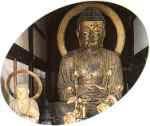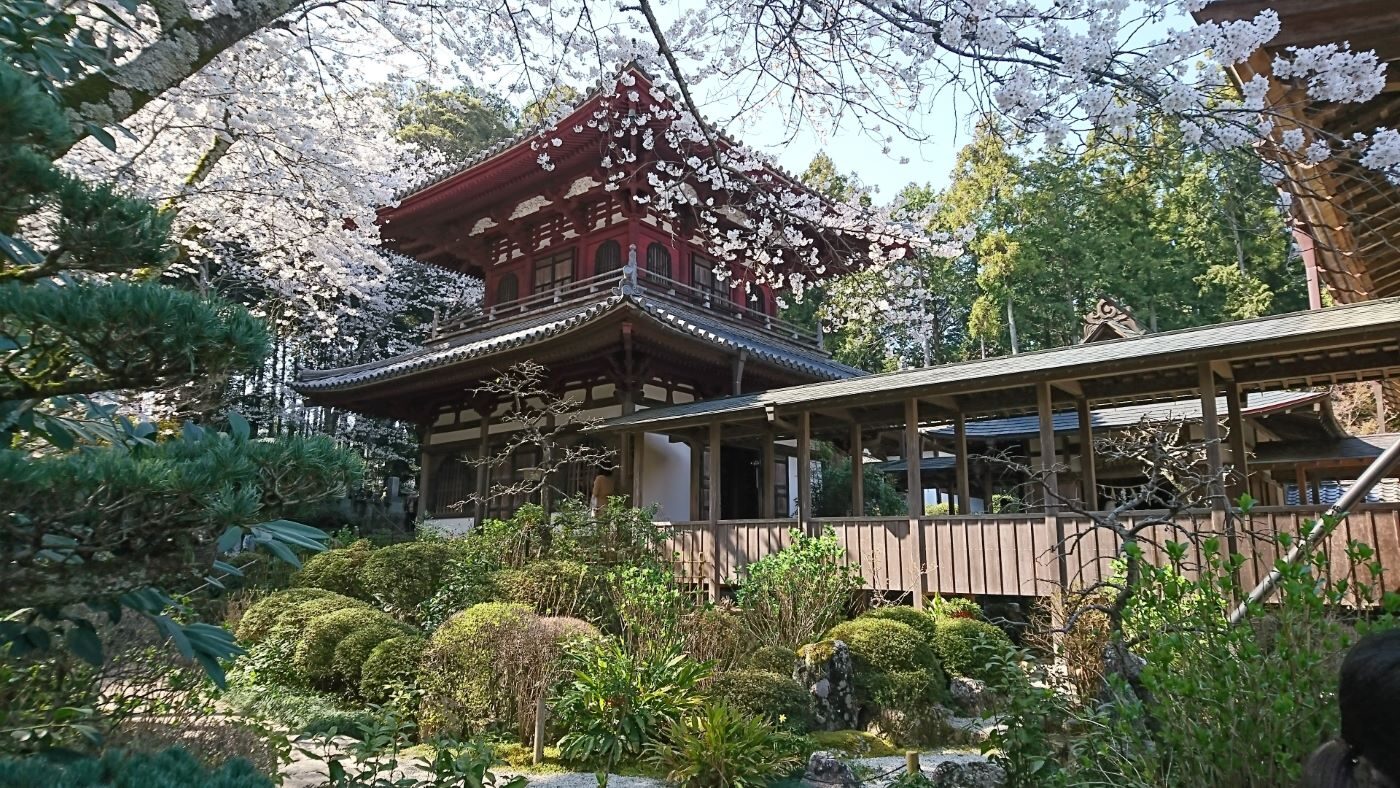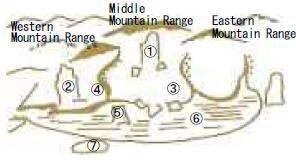The Ryotanji Temple was founded in the year 733 by Gyoki, Bodhisattva. There are many cultural assets here, such as the garden designed by Enshu Kobori, and the sculpture of a dragon carved by Jingoro Hidari.

The li family’s Temple is called Munenaga Shino and the grave of Prince Munenaga Shino who died about 500 years ago are located there. This has been the li family’s home temple for 40 generations, including Naosuke li, a famous lord in the last days of Tokugawa Shogunate, and li Naomasa, one of the big four lords at the Tokugawa Period. Ryotanji is one of the 5 famous temples in the northern area of Lake Hamana.

In Ryotanji, you will get everything in a compact, pleasant atmosphere. If you are only going to one temple/shrine in the area, this is a great representative. There is a shrine adjacent and a traditional cemetery in the back.

The garden was created by Enshu Kobori and is located in the northern section of the temple. The hallways boards emit a birdlike chirping sound, and the dragon was carved by Hidari Jingoro. The entire Edo period structure has been designated as a Shizuoka Prefectural cultural property.

The main hall enshrines Akasahagarbha Bodhisattva, a secret Buddhist image that imparts wisdom. They have pamphlets in English available. The temple has the traditional gate with good examples of the nios who guard the temples.
Points of Special Interest:

The floors are “Nightingale Floors” made from pine tree wood. They make a special sound when walked on and are called “Singing Floor Boards.” This “Nightingale Floor” was constructed by Hidari Jingoro.

The wood carving of the dragon (the ryu in the Ryotanji name) was also made by Hidari Jingoro.

A nationally designated cultural asset the “Kanazawa Bunko” is the oldest of its kind from China. It was left to Japan as a cultural heritage, originally by Nobunaga Oda.

The “Ryotanji Byobu” (a folded screen) is entitled “Yuge no Zu” and is supposedly the work of Matabei Iwasa. This folding screen portrays the customs and recreations of the people of the Edo period.
Otamaya (mausoleum) for the lis

It is recorded that Priest “Hakuin Hara” who is highly respected as a great contributor to the prosperity of the Rinzai Zen sect attended the Rakkei memorial service for this mausoleum where the spirit of the members of the Iis is enshrined. The wooden statues of Tomoyasu. the founder of the lis. Naomori the fifteenth and Naomasa the seventeenth are enshrined in this mausoleum.
Joroku the great image of Buddha

This is the biggest of all the images of Buddha “Shakyamuni Tathagata” in the Enshu district. The temple for this great image of Buddha was destroyed in the early Meiji era when the anti-Buddhist movement took place and the image is new provisionally placed in the main building of the temple.
Kuri (The priests living)

Rebuild in 1815. At the end of the steps along the stone wall that reminds us of a castle wall. There stands right before a beautiful Quarter peculiar to Zen temples. Built during the period of Priest Chuzan the fourteenth e this stately Quarter of 9 ken(54feet) wide and 14ken (84feet) long represents modern times.
Kaisando

Built in 1702 Kaisandoe a many-storied building in vermilion stands to the west main building. The building was constructed to enshrine Priest Kaisan.
Somon (The main gate)

Rebuilt in 1734. Once you step into the approach to the temple you can see the main gate built in the method of shikya kumon zukuri (four legged gate construction) at the end of the white plaster wall. The gate was rebuilt by Priest Sozan the ninth . Old comma patterned tiles made in Muromachi Period are seen on the roof.
History
This Temple was founded in the year 733 by the Priest Gyoki, who enshrined a Buddhist image here. In the year 1010, a baby appeared in the “Well” which is in front of this temple, and there was washed (for purification).
The child was raised at the temple until he was 7 years old. In later years, the child retired to Iinoya (this area) and took the name of “Ii”. Then he was named Ii Tomoyasu, who was the feudal lord of the Ii family, When he died in 1093, he was buried in this temple.
The Ii family had governed this region for approximately 500 years until Ii Naomasa (the 17th. Lord Ii) moved his residence to Hikone City in Shiga Pref. During that 500 years period. Ryotanji served as their family temple.
Ryotanji TempleThe Ii family were the ancestors of Ii Naosuke, and the character for “Well” is in the family crest. Since there was a wild orange tree beside the well, the character for this tree is also on the family crest.
In the year 1572, this temple was (burnt by) the Lord Imagawa. The whole building was rebuilt by the Ii family in the Edo Era. The Hondo (Main Hall) was built in the year 1670. The Kaisando which was constructed to honor the enshrined priest “Kaisan” was built in 1702. The Kuri (entrance building) was made in 1815.
Ryotanji Garden
Ryotanji temple was designed and executed by Enshu Kobori, a famous artist of the early Edo era. He adopted the Chisen Kansho style of temple garden, which means the garden can best be appreciated while sitting on the veranda. In this garden, local mountain rocks (red chert) are beautifully arranged with Shugoseki in the center. On the right and left of the garden are Guard stones.
Jizo At Ryotanji TempleIn the front of the garden is Raihai-seki (the stone of Prayer). Directly in front of these rock formations is a pond which takes the shape of the Chinese character ”Kokoro”, “the heart of things.” Other stones represent waterfalls (there are five of these), a crane and a turtle. The combination of these many rock formations and the pond makes this a typical temple garden. One can enjoy the changing colors of the garden with the passing of each season.
A ROUGH SKETCH OF THE GARDEN

- Shugoseki, (Symbol of the garden)
- Nioh Seki (Guard stone)
- Kame dejima (Turtle head-shaped protrusion stone) “Kame” Turtle means- long life.
- Tsuru dejima (Crane-shaped relationship for stones.) The “Tsuru” Crane means happiness.
- Holirai Gan Tou (The rocky isle of Eternal Youth.) These three are congratulatory,
- Shinji Ike (The pond itself is in the shape of the character for the heart.)
- Raihai Seki (The stone of prayer)
- Dry waterfall, Dry stream, (A method peculiar to dry Japanese gardens)
- Garden Rock : Richly covered with moss, they maintain their dignity,
- Garden plants: Satsuki azalear (May) Doban azalear (during the time for autumnal tints.)
Address and Contact:
Ryotanji Temple and Garden 1989 Inasa town (Inasa-cho), Iinoya, Hamamatsu City (Hamamatsu-shi), Kita ward (Kita-ku), Shizuoka Prefecture 431-2212, Japan
Entrance: Adults ¥400, elementary and jr. high school students ¥150 Closed: Aug.15, Dec.22~27 Hour: 9:00-16:30
TEL: 053-542-0480
Website (Japanese): http://www.ryotanji.com/





